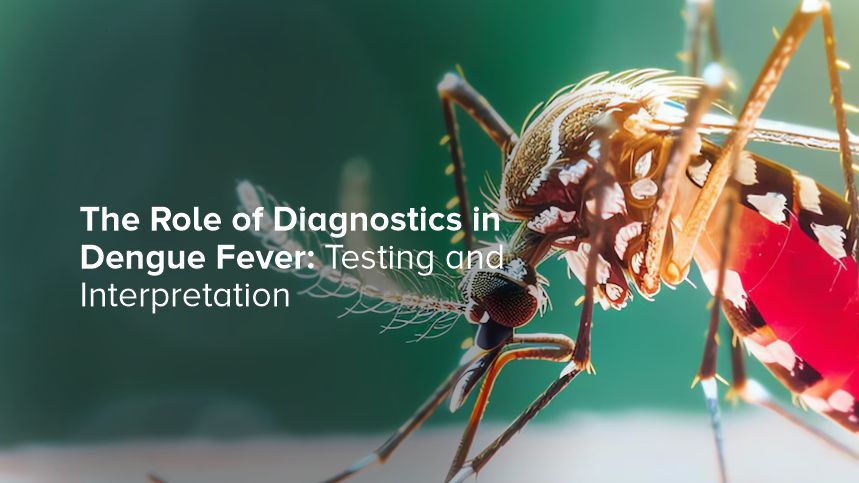


Condition
- Others
- Others
- Others
- Others
- Others
- Others
- Others
- Others
- Others
- Others
- Others
- Others
- Others
- Others
- Others
- Others
- Others
- Others
- Others
- Others
- Others
- Others
- Others
- Others
- Others
- Others
- Others
- Others
- Others
- Others
- Others
- Others
- Others
- Others
- Others
- Others
- Others
- Others
- Others
- Others
- Others
- Others
- Others
- Others
- Others
- Others
- Others
- Others
- Others
- Others
- Others
- Others
- Others
- Others
- Others
- Others
- Others
- Others
- Others
- Others
- Others
- Others
- Others
- Others
- Others
- Others
- Top tests
- Top tests
- Top tests
- Top tests
- Top tests
- Top tests
- Top tests
- Top tests
- Top tests
- Preventive Health Checkup
- Top tests
- Top tests
- Top tests
- Top tests
- Blood Banking & Transfusion
- Lifestyle Packages
- Blood Banking & Transfusion
- Blood Banking & Transfusion
- Top tests
- Top tests
- Lifestyle Packages
- Diabetes
- Blood Banking & Transfusion
- Blood Banking & Transfusion
- Blood Banking & Transfusion
- Blood Banking & Transfusion
- Blood Banking & Transfusion
- Others
- Others
- Others
- Others
- Blood Banking & Transfusion
- Blood Banking & Transfusion
- Blood Banking & Transfusion
- Blood Banking & Transfusion
- Vitamin Deficiency
- Vitamin Deficiency
- Vitamin Deficiency
- Vitamin Deficiency
- Vitamin Deficiency
- Blood Banking & Transfusion
- Blood Banking & Transfusion
- Blood Banking & Transfusion
- Blood Banking & Transfusion
- Diabetes
- Diabetes
- Heart Disease & Hypertension
- Preventive Health Checkup
- Diabetes
- Preventive Health Checkup
- Preventive Health Checkup
- Diabetes
- Diabetes
- Heart Disease & Hypertension
- Top tests
- Heart Disease & Hypertension
- Diabetes
- Top tests
- Diabetes
- Heart Disease & Hypertension
- Lifestyle Packages
- Heart Disease & Hypertension
- Lifestyle Packages
- Heart Disease & Hypertension
- Heart Disease & Hypertension
- Lifestyle Packages
- Preventive Health Checkup
- Preventive Health Checkup
- Top tests
- Preventive Health Checkup
- Heart Disease & Hypertension
- Heart Disease & Hypertension
- Heart Disease & Hypertension
- Top tests
- Top tests
- Lifestyle Packages
- Heart Disease & Hypertension
- Heart Disease & Hypertension
- Top tests
- Heart Disease & Hypertension
- Preventive Health Checkup
- Diabetes
- Lifestyle Packages
- Heart Disease & Hypertension
- Top tests
- Heart Disease & Hypertension
- Heart Disease & Hypertension
- Diabetes
- Lifestyle Packages
- Preventive Health Checkup
- Diabetes
- Top tests
- Diabetes
- Allergy
- Heart Disease & Hypertension
- Diabetes
- Heart Disease & Hypertension
- Diabetes
- Lifestyle Packages
- Lifestyle Packages
- Top tests
- Preventive Health Checkup
- Lifestyle Packages
- Preventive Health Checkup
- Preventive Health Checkup
- Diabetes
- Top tests
- Heart Disease & Hypertension
- Preventive Health Checkup
- Top tests
- Heart Disease & Hypertension
- Lifestyle Packages
- Lifestyle Packages
- Diabetes
- Preventive Health Checkup
- Top tests
- Diabetes
- Top tests
- Preventive Health Checkup
- Preventive Health Checkup
- Preventive Health Checkup
- Diabetes
- Lifestyle Packages
- Lifestyle Packages
- Heart Disease & Hypertension
- Lifestyle Packages
- Heart Disease & Hypertension
- Lifestyle Packages
- Preventive Health Checkup
- Preventive Health Checkup
- Preventive Health Checkup
- Lifestyle Packages
- Top tests
- Lifestyle Packages
- Top tests
- Lifestyle Packages
- Top tests
- Diabetes
- Diabetes
- Others
- Blood Disorders
- Top tests
- Others
- Others
- Others
- Fever
- Fever
- Blood Disorders
- Blood Disorders
- Preventive Health Checkup
- Preventive Health Checkup
- Profile
- Kidney Disease
- Kidney Disease
- Diabetes
- Diabetes
- Heart Disease & Hypertension
- Preventive Health Checkup
- Lifestyle Packages
- Thyroid Disorder
- Diabetes
- Diabetes
- Diabetes
- Diabetes
- Diabetes
- Diabetes
- Diabetes
- Top tests
- Allergy
- Top tests
- Top tests
- Top tests
- Top tests
- Diabetes
- Top tests
- Diabetes
- Top tests
- Top tests
- Top tests
- Liver Disease
- Diabetes
- Top tests
- Vitamin Deficiency
- Top tests
- Top tests
- Liver Disease
- Top tests
- Top tests
- Top tests
- Anemia
- Anemia
- Anemia
- Diabetes
- Diabetes
- Anemia
- Top tests
- Top tests
- Top tests
- Preventive Health Checkup
- Thyroid Disorder
- Heart Disease & Hypertension
- Top tests
- Preventive Health Checkup
- Diabetes
- Heart Disease & Hypertension
- Top tests
- Fever
- Allergy
- Liver Disease
- Lifestyle Packages
- Heart Disease & Hypertension
- Top tests
- Arthritis
- Top tests
- Top tests
- Heart Disease & Hypertension
- Kidney Disease
- Preventive Health Checkup
- Allergy
- Top tests
- Lifestyle Packages
- Top tests
- Kidney Disease
- Top tests
- Lifestyle Packages
- Top tests
- Preventive Health Checkup
- Preventive Health Checkup
- Top tests
- Top tests
- Vitamin Deficiency
- Allergy
- Diabetes
- Top tests
- Top tests
- Top tests
- Top tests
- Heart Disease & Hypertension
- Allergy
- Top tests
- Preventive Health Checkup
- Top tests
- Top tests
- Infertility
- Top tests
- Lifestyle Packages
- Allergy
- Diabetes
- Heart Disease & Hypertension
- Lifestyle Packages
- Preventive Health Checkup
- Preventive Health Checkup
- Top tests
- Preventive Health Checkup
- Top tests
- Diabetes
- Top tests
- Infertility
- Top tests
- Thyroid Disorder
- Top tests
- Allergy
- Preventive Health Checkup
- Vitamin Deficiency
- Top tests
- Top tests
- Infertility
- Lifestyle Packages
- Diabetes
- Liver Disease
- Kidney Disease
- Vitamin Deficiency
- Top tests
- Heart Disease & Hypertension
- Heart Disease & Hypertension
- Top tests
- Heart Disease & Hypertension
- Heart Disease & Hypertension
- Heart Disease & Hypertension
- Infertility
- Heart Disease & Hypertension
- Vitamin Deficiency
- Vitamin Deficiency
- Arthritis
- Arthritis
- Top tests
- Top tests
- Lifestyle Packages
- Preventive Health Checkup
- Lifestyle Packages
- Preventive Health Checkup
- Vitamin Deficiency
- Top tests
- Lifestyle Packages
- Lifestyle Packages
- Preventive Health Checkup
- Top tests
- Preventive Health Checkup
- Top tests
- Heart Disease & Hypertension
- Infertility
- Top tests
- Top tests
- Preventive Health Checkup
- Lifestyle Packages
- Top tests
- PCOD
- Preventive Health Checkup
- Lifestyle Packages
- Preventive Health Checkup
- Top tests
- Fever
- PCOD
- Kidney Disease
- Top tests
- Top tests
- Preventive Health Checkup
- Preventive Health Checkup
- Liver Disease
- Thyroid Disorder
- Top tests
- Heart Disease & Hypertension
- PCOD
- Top tests
- Arthritis
- Preventive Health Checkup
- Kidney Disease
- Lifestyle Packages
- Top tests
- Allergy
- Top tests
- Top tests
- Diabetes
- Thyroid Disorder
- Preventive Health Checkup
- Top tests
- Lifestyle Packages
- Preventive Health Checkup
- Top tests
- Kidney Disease
- Liver Disease
- Infertility
- Top tests
- Anemia
- Top tests
- Top tests
- Top tests
- Preventive Health Checkup
- Bone Health
- Cancer
- Fatty Liver

Tests
Imagine a world where a mosquito bite can lead to severe illness, and you have no way of knowing if you're affected until it's too late. For many in tropical and subtropical regions, this is a reality. Dengue fever, a mosquito-borne viral infection, affects millions every year. The role of diagnostics in identifying dengue fever early is crucial for effective treatment and management. This blog will help you understand the importance of diagnostic tests in detecting dengue fever, how these tests work, and how to interpret the results.
The Importance of Early Detection in Dengue Fever
Early detection of dengue fever can significantly improve patient outcomes. When diagnosed early, healthcare providers can closely monitor patients and provide supportive care to prevent serious complications. Additionally, early detection helps in controlling the spread of the virus by isolating infected individuals and taking necessary vector control measures.
Overview of Diagnostic Methods
Several diagnostic methods are available to detect dengue fever. These can be broadly categorized into virus detection, serological tests, and molecular tests. Each method has its advantages and limitations, making it essential to choose the appropriate test based on the stage of the illness and available resources.
Virus Detection Methods
Virus detection methods aim to identify the presence of the dengue virus in the patient's blood. These methods are most effective during the early stages of infection when the virus is present in high concentrations.
Viral Culture
Viral culture involves growing the dengue virus in a laboratory setting using a patient's blood sample. This method is highly specific, but it is time-consuming and requires specialized facilities, making it less practical for widespread use.
NS1 Antigen Test
The NS1 antigen test detects the non-structural protein 1 (NS1) of the dengue virus. This protein is released into the bloodstream during the early stages of infection. The NS1 antigen test is quick and easy to perform, making it a valuable tool for early diagnosis. However, its sensitivity decreases as the infection progresses.
Serological Tests for Dengue Fever
Serological tests detect antibodies produced by the immune system in response to the dengue virus. These tests are particularly useful during the later stages of infection when the virus may no longer be detectable in the blood.
IgM Antibody Test
The IgM antibody test detects immunoglobulin M (IgM) antibodies, which are produced by the body shortly after infection. These antibodies typically appear within 4-5 days of symptom onset and remain detectable for several weeks. The IgM antibody test is a reliable method for diagnosing recent dengue infections.
IgG Antibody Test
The IgG antibody test detects immunoglobulin G (IgG) antibodies, which appear later in the course of the infection and can persist for years. This test is useful for identifying past infections and assessing immunity levels. However, it may not be effective for diagnosing acute dengue fever.
Molecular Tests in Dengue Diagnosis
Molecular tests detect the genetic material of the dengue virus, providing a highly sensitive and specific method for diagnosis. These tests are particularly valuable during the early stages of infection.
Polymerase Chain Reaction (PCR) Test
The PCR test amplifies the viral RNA, making it possible to detect even small amounts of the virus in the patient's blood. This test is highly sensitive and specific, making it an excellent choice for early diagnosis. However, it requires specialized equipment and trained personnel, limiting its availability in some settings.
Real-Time PCR
Real-time PCR is a variation of the traditional PCR test that allows for the detection and quantification of viral RNA in real-time. This method is highly accurate and can provide valuable information about the viral load, which can help guide treatment decisions. However, like the traditional PCR test, it requires specialized equipment and expertise.
Interpreting Diagnostic Test Results
Understanding how to interpret diagnostic test results is crucial for effective dengue fever management. Each test has its own set of considerations and potential pitfalls, making it essential to understand the nuances of each method.
Positive vs. Negative Results
A positive result indicates the presence of the dengue virus or antibodies, suggesting an active or past infection. A negative result means that no dengue virus or antibodies were detected, but this does not necessarily rule out the possibility of infection, especially if the test was performed too early or too late in the course of the disease.
False Positives and False Negatives
False positives occur when a test incorrectly indicates the presence of dengue virus or antibodies, while false negatives occur when a test fails to detect an existing infection. Understanding the limitations of each diagnostic method can help healthcare providers minimize the risk of misdiagnosis.
The Role of Diagnostics in Disease Surveillance
Accurate diagnostics play a crucial role in disease surveillance and outbreak management. By identifying cases of dengue fever early, public health officials can implement targeted control measures to prevent the spread of the virus. Additionally, diagnostic data can help track the effectiveness of interventions and guide future strategies.
Conclusion
In conclusion, diagnostics play a vital role in the detection and management of dengue fever. By understanding the various diagnostic methods available and their respective strengths and limitations, healthcare providers can make informed decisions that improve patient outcomes. Furthermore, advancements in diagnostic technology hold promise for the future, offering hope for more effective control and prevention of dengue fever.
WANT TO BOOK HEALTH CHECKUP ?
Categories
Others
74
Top tests
100
Preventive Health Checkup
46
Blood Banking & Transfusion
16
Lifestyle Packages
35
Diabetes
40
Vitamin Deficiency
12
Heart Disease & Hypertension
37
Allergy
9
Blood Disorders
3
Fever
4
Profile
1
Kidney Disease
8
Thyroid Disorder
5
Liver Disease
6
Anemia
5
Arthritis
4
Infertility
6
PCOD
3
Bone Health
1
Cancer
1
Fatty Liver
1
Recent Blogs
Vitamin B1 Test: Why Thiamine Levels Matter for Your Health
Vitamin B1, also known as thiamine, is an essential nutrient that plays a critical role...
27-10-2025
Vitamin A Deficiency: Signs, Symptoms, and How to Prevent It
Vitamin A is an essential fat-soluble vitamin that plays a vital role in maintaining good...
27-10-2025
Fatty Acids Test: When Your Doctor Might Recommend It
Fatty acids play a crucial role in maintaining optimal health, yet many people remain unaware...
27-10-2025







